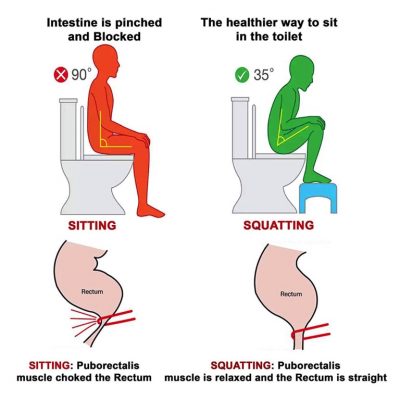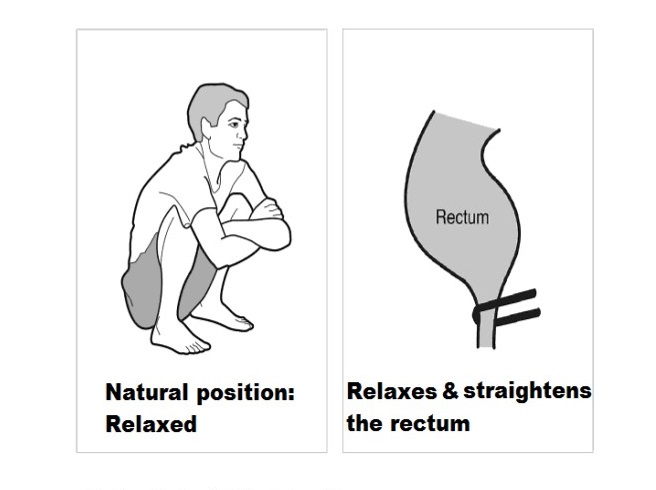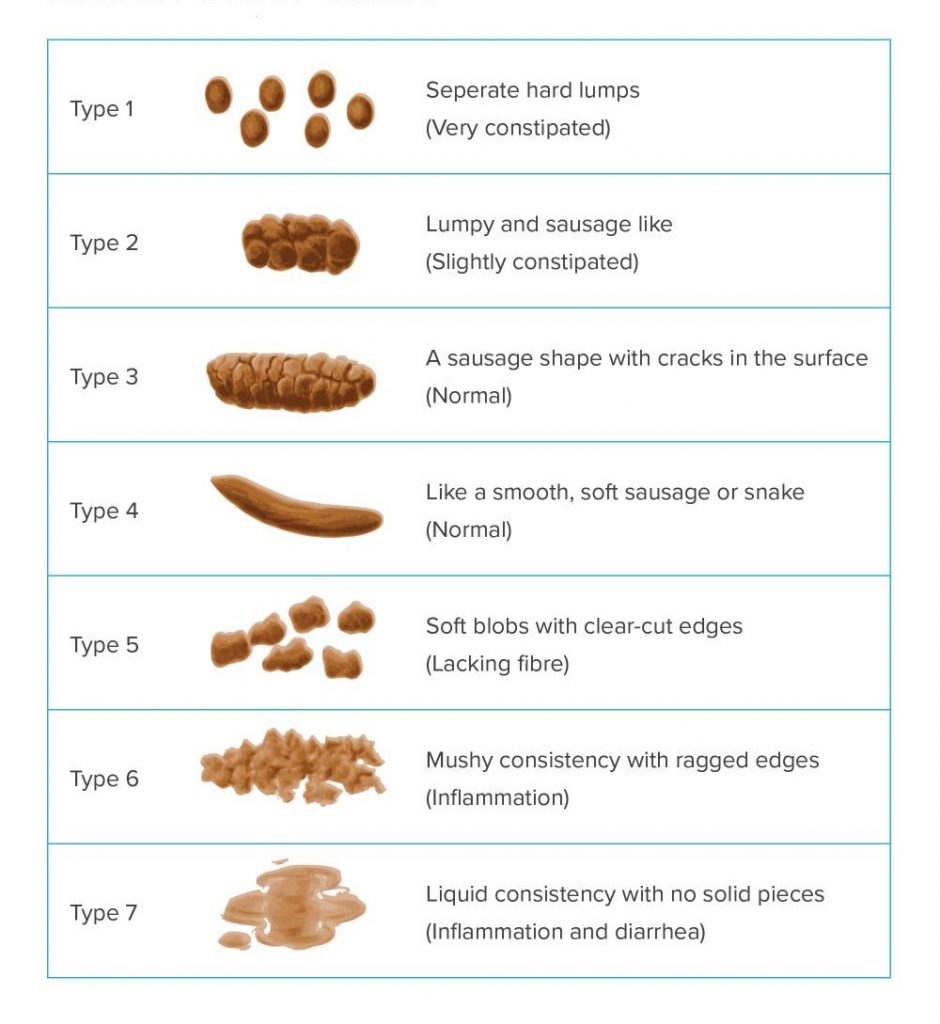While we happily discuss many physical ailments without a second thought, you would never say to a friend or colleague, “I’m having a really hard time pooing lately.” Yes, it holds true. In this blog, we will discuss constipation, its symptoms, causes, and remedies in detail.
When you first feel the urge to poo you can hold on long enough to get to a toilet without an accident. However, repeated withholding can cause constipation, particularly in children – it’s best to move your bowels when you feel the first urge.
The symptoms
The following situations may suggest a digestive issues;
- A sensation that the bowels haven’t completely emptied
- Bloating of the abdomen, and possibly a “rumbling” noise
- Gas
- Indigestion
- Infrequent bowel movements
- Loss of appetite
- Lumpy and hard stools that are difficult to pass
- Needing to strain to get the stool out
- Pain or pressure in the belly
- Some bleeding as a result of straining
- Poop that is colored red, black, green, yellow, or white
Before moving ahead, you must know our digestive system in detail first.
The causes
Constipation occurs when stool or waste material moves too slowly through the large intestine. The indigestible parts of our food pass into the colon (1).
The time it takes for food to pass from one end of the digestive tract to the other is called “bowel transit time”, one to three days on average, and 90% of that time is spent in the bowel.
A slow bowel transit time means the feces that spends longer in the large intestine become dehydrated and more difficult to pass. This results in difficult, painful, and infrequent bowel movements.
The quantity also increases if you wait to go to the toilet. A large, hard stool can be painful and difficult to pass. This can make people, especially children, reluctant to go, creating a vicious cycle.
Diet
Fiber acts as a binding substance to give stool its form. It also helps poop to move smoothly through the digestive tract. A diet that is low in fiber-rich foods, such as fruits, vegetables, whole grains, and pulses, can lead to bowel problems.
Must know these 8 ways to eat more vegetables and fruits in your daily diet.
Dehydration
Not drinking enough water and other fluids can lead to constipation, as stool requires moisture to be able to move through the digestive tract. Too much caffeine and alcohol can contribute to dehydration.
Also, you should avoid dehydration by drinking water when feel thirsty.
Other conditions
While most otherwise healthy people will occasionally experience constipation, certain diseases or conditions can also cause it, such as:
- Bowel obstructions due to a tumor or benign growth
- Chronic kidney failure
- Depression
- Stress
- Diabetes
- Hypothyroidism
- Irritable bowel syndrome
- Neurologic disorders such as Parkinson’s disease, multiple sclerosis, or spinal cord injury
- Rectal or colon cancer
You must know these all-natural ways to relieve stress from your system.
Certain medication
Acute constipation starts suddenly and lasts for a few days. It can be caused by a blockage, prolonged inactivity, medication, dehydration, or missing a bowel movement (2).
Certain medications like antidepressants, certain diuretics, heart medications such as calcium-channel blockers, iron supplements, and some antacids may also provoke acute constipation.
Toilet strain
Straining increases your intra-abdominal pressure and causes congestion of the soft tissues. So, you are more likely to develop piles, prolapse, or vaginal varicose veins.
For some people, a bowel movement means straining and holding their breath, a move known as a Valsalva Maneuver.
It may lead to a stroke or heart attack or cardiac arrest. Cases of people fainting or having a cardiac arrest in the toilet when straining are well known, particularly those who have recently had heart surgery or who suffer from a number of other maladies.
Must read – Why does stroke or cardiac arrest in bathroom are frequent?
Remedies for constipation
Before planning for the remedies, consult your doctor first. He may conduct a physical exam to identify whether there are hard stools in your intestine or any unusual masses in your stomach. This will include a digital rectal exam to check muscle tone.
Constipation can be treated medically, but lifestyle changes are often very important. Also, we know that a full bowel can irritate a bladder – many cases of incontinence are related to constipation. In my experience, deal with the bowel first.
The following practices can both treat and prevent constipation:
- Visit the toilet immediately when you feel the first urge. Schedule regular times for toilet use. Try to have a bowel movement at the same time each day.
- Drink plenty of water – at least 8 glasses of fluid each day is recommended.
- Lower your consumption of processed foods.
- Avoid caffeine
- Include more fiber in diet – Increase dietary fiber to about 25 g per day for women and 38 g per day for men by eating whole grains, especially flaxseed, fruits, and vegetables.
- Take probiotics – Know more about probiotics and foods.
- Regular exercise – Do physical exercise to stimulate the movement of waste through your intestines.
- Don’t hold the breath for longer, ssss, grrrr, or moo. Do not strain.
- Do a pelvic floor contraction when the bowel movement is done to encourage complete closing.
Toilet Positions
Trying to maintain a good toilet position may be useful for people that find it difficult to pass a stool, who strain when defecating, or who suffer from constipation.
Must read – When was the last time you bath right way?
There is no right or wrong way to sit on the toilet; however, the following pointers may help make emptying your bowels easier.
The western toilets
- Sit on the toilet with your knees higher than your hips. Propping something like a footstool under your feet can help.
- Lean forward and put your elbows on your knees. Sitting like this helps open your anorectal passage.
- Try to breathe to the bottom of your lungs with your mouth open to prevent straining and contracting your pelvic floor (diaphragmatic breathing)

- Bulge out your tummy while keeping a straight back, relax your back passage, and let go. Do not tighten your tummy.
- Relax your anal sphincter to open your bottom and let the stool out. Use your deep breath to increase the pressure in your abdomen and push down towards your anus.
Only try this maximum of 3 times. If it does not work, get up from the toilet and walk around. It may help to try having a warm/hot drink.
Indian style toilets
Indian toilet (squatting) is not only the oldest form but also the most scientifically proven form for human anatomy which the western world has been realizing of late and embracing it gradually (3).
Squatting has been the most natural posture to finish one’s daily “business”. To find comfortable positioning, bend your knees, and lower yourself as if you’re balancing weights on your shoulders until you reach a semi-sitting position.

You may be most comfortable with your thighs together and your arms resting on your knees. Apart from this, using Indian style toilets are more hygienic than western toilets.
You may like to read – How to hold your pee when no bathroom in sight.
What does a healthy poop look like?
Normal poop is generally should be soft, painless, and require minimal strain. A normal or a healthy poop can be long, sausage-like in shape (due to the shape of intestines). It may be passed in one single piece or a few smaller pieces (4).

Most people pass stool once a day, although others may poop every other day or up to three times daily. At a minimum, a person should pass stool three times a week. Along with that, a normal poop looks like;
- Medium to dark brown: This is because it contains a pigment called bilirubin, which forms when red blood cells break down.
- Strong-smelling: Bacteria in excrement emit gases that contain the unpleasant odor associated with poop.
A healthy poop varies from person to person. However, a person should monitor any changes in the smell, firmness, frequency, or color of poop as it can indicate there is a problem.
You must know – Why does urine smells bad sometimes?
The abnormal poop looks like
While brown poop is considered the “normal” color of poop, some greenish-brown hues may also be acceptable (5).
Black – Due to Substances such as iron supplements, black stout, and bismuth medications also cause black poop. Sometimes, it suggests gastrointestinal bleeding.
White – An issue with the liver or gallbladder as pale stools suggest a lack of bile. Some anti-diarrhea medications cause white stools.
Orange – If you eat carrots, sweet potatoes, and winter squash the poop may appear orange. It is due to a pigment called beta-carotene.
Green – Spinach, kale, or other green foods can cause green poop. It could be a sign that there is too much bile and not enough bilirubin in the poop.
Yellow – If the poop contains too much fat. It may be due to absorption issues as well.
Red – It could be the result of gastrointestinal bleeding. Small amounts of blood in the stool can indicate hemorrhoids. Eating beets or red berries, or drinking beet or tomato juice also turns poop red.
Any person who experiences changes in poop color that last for 2 or more weeks or has red or black stool should see their doctor.
Complications
In many cases, constipation is harmless, but it can significantly lower your quality of life. It’s not a disease, but it might be a symptom of a disease.
Must read – A healthy lifestyle may reduce the chances of colon cancer
Very large, hard stools can stretch the anus, tearing the skin. These anal fissures can be very painful.
Occasionally, a really tough bowel movement causes rectal prolapse, in which a small section of intestinal lining pokes out of the anus and has to be pushed back in. Hemorrhoids can also be caused by the chronic pushing of constipation.
If you have experienced constipation lasting longer than 7 days or your constipation has been accompanied by vomiting, blood in the stool, weight loss, a swollen and painful abdomen, fever, or small, pencil-sized stool, seek medical attention.
